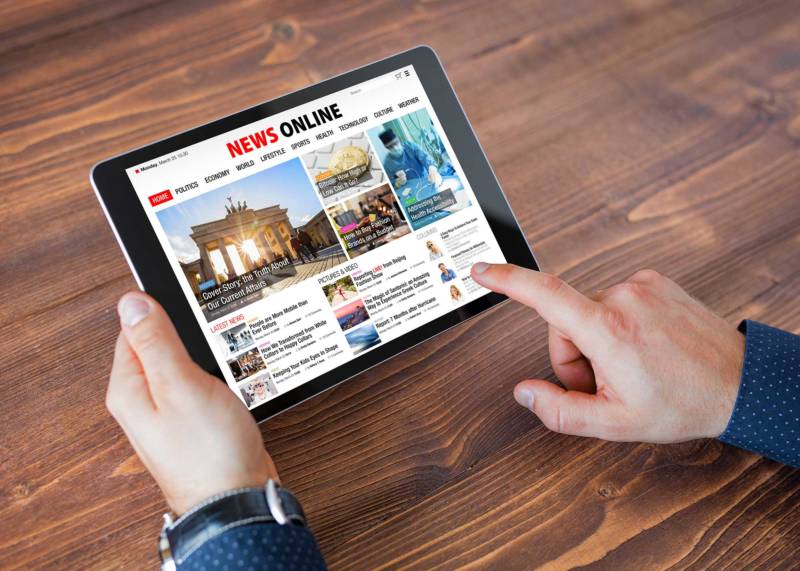During the course of our ongoing collaboration with KQED, my fellow academic researchers and I have learned that science media professionals are especially interested in improving strategies for headline design, with the goal of increasing audience engagement. Their intuitions about the importance of headlines are supported by research findings. At least when browsing on social media platforms, media consumers often make decisions about whether to engage with stories based only off of the headline.i Moreover, headlines influence the way people interpret the story and the impressions they form about the story.ii It is surprising, then, that there hasn't been much research published in the science communication literature that has aimed to contribute to (or come up with) theories for why different headlines work the way that they do. Therefore, we conducted an experiment to examine whether headline format influences whether someone (a) selects a story to read, (b) anticipates engaging with that story (e.g., commenting, sharing), and/or (c) evaluates the story as more or less credible.
Our Experiment
Our experiment manipulated two factors: the format of the headline (whether traditional, forward-referencing, or question-based) and the story topic (earthquakes, climate change, or air pollution). We were specifically interested in potential differences between headline formats, but we wanted to see if any differences that we found for one story topic would be present for other story topics as well.
The different headline formats we used vary in the amount of uncertainty that they express.iii Traditionally-formatted headlines provide an overview of the main idea from an article in a succinct and clear way (e.g., Scientists Still Don’t Know if Little Earthquakes Lead to a Big One). Forward-referencing headlines are those that emphasize unknown information that the article will address (e.g., Here’s what Little Earthquakes Tell Scientists About the Likelihood of the Big One). Question-based headlines are those that pose a question that the story is presumed to answer (e.g., Do Little Earthquakes Mean the Big One is Close at Hand?). Each of the headlines was based on real stories run by KQED's Science News team. Participants each saw only one of the nine possible headlines embedded in a list with three other headlines (one about entertainment, one about sports, and one about business) as they might see it on their social media feeds with a graphic and a dateline. They were asked to choose which of the four headlines they would most likely click on to read. Then, they were shown only the target headline and asked questions about it.
Our Findings
Although we did find differences in how individuals might evaluate the credibility of a headline and of a story based on the headline format, whether individuals wanted to read a story or engage with a story did not seem to differ based on headline format, at least with the examples we used in this experiment. Of course, the absence of evidence is not always evidence of absence; it may be that the formats of headlines we tested (forward-referencing, traditional, and question-based) did not vary enough. Other features of headlines such as the formality of language, the tone, or the use of metaphor may be more influential.
That said, it is still important to publish studies that find little or no significant differences in engagement. Our work on science curiosity has shined a light on the possible benefit of sparking curiosity among audiences (as opposed to highlighting conflict, for instance) for increasing interest and engagement. The most intuitive method for sparking curiosity may be to frame headlines as questions to highlight uncertainty.iv Studies with children, for example, find that asking pointed questions (as opposed to stating pertinent information) increases exploratory behavior.v Applied to adults, we may intuit that asking leading questions would spark curiosity and increase engagement with science news stories. Although science curiosity predicted anticipated engagement, participants generally (and millennials in particular) saw question-based headlines as less credible. Moreover, they were less likely to categorize these stories as real news (choosing “fake news” or “satire”) than they were the other headline types. Thus, the intuitive method of sparking curiosity via asking questions to increase engagement could result, instead, in loss of credibility—something that the news media, and science news in particular, cannot afford to lose.
For more information about this study, see the attached slide deck and report.
References
iPearson, G. D. H. & Kosicki, G. M. (2017). How Way-finding is Challenging Gatekeeping in the Digital Age.
Journalism Studies, 18(9), 1087-1105. doi: 10.1080/1461670X.2015.1123112
ii Scacco, J. M., & Muddiman, A. (2016). Investigating the influence of “clickbait” news headlines. Engaging News Project Report. Retrieved from: http://mediaengagement.org/wp-content/uploads/2016/08/ENP-Investigating-the-
Influence-of-Clickbait-News-Headlines.pdf
iii Blom, J. N., & Hansen, K. R. (2015). Click bait: Forward-reference as lure in online news headlines. Journal of Pragmatics, 76, 87-100. doi: 10.1016/j.pragma.2014.11.010
iv Loewenstein, G. (1994). The psychology of curiosity: A review and reinterpretation. Psychological Bulletin, 116(1), 75. doi: 10.1037%2F0033-2909.116.1.75
v Yu, Y., Landrum, A., Bonawitz, E., & Shafto, P. (2019). Questioning supports effective transmission of knowledge and increased exploratory learning in pre-kindergarten children. Developmental Science, 21(6), e12696. doi: 10.1111/desc.12696
